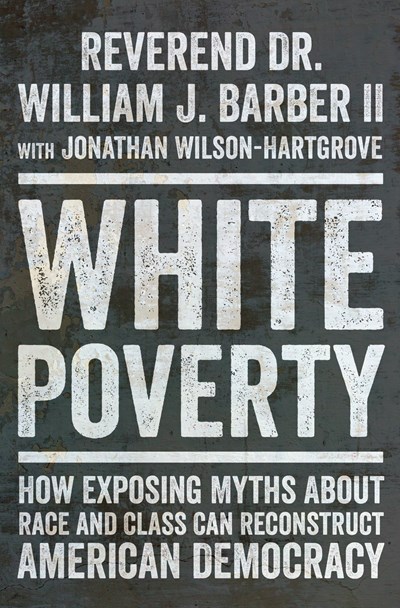The title “White Poverty” by William J. Barber II and Jonathan Wilson immediately stirs curiosity. It beckons readers into a contentious discourse, urging them to reconsider the prevalent narratives surrounding poverty in America. This profound exploration dismantles preconceptions, revealing layers of complexity often obscured in mainstream discussions. As we delve into the nuances of the book, it becomes apparent that its promise lies in transforming our understanding of systemic inequities and highlighting a demographic often overlooked in poverty discussions: white Americans marginalized by economic disparities.
In “White Poverty,” the authors embark on an analytical journey that juxtaposes the historical context of poverty with contemporary realities. They invoke significant socio-economic data, interwoven with personal anecdotes and stories, forming an intricate tapestry that underscores the lived experiences of those who fall within this demographic. This book does not merely present statistics; it humanizes them. Readers are introduced to voices that resonate with despair and resilience, challenging the societal oversimplifications that paint a monolithic picture of impoverished individuals.
Barber and Wilson establish an essential framework, elucidating that poverty is not merely a lack of financial resources but encompasses social capital, access to education, and employment opportunities. They assert that white poverty is often dismissed in discussions surrounding systemic inequality, which predominantly focuses on issues faced by racially marginalized groups. This oversight stymies a holistic understanding of economic disenfranchisement in the United States, where, paradoxically, significant numbers of white individuals experience abject poverty yet remain unseen and unheard.
The authors meticulously detail the socio-economic conditions that precipitate white poverty, drawing connections to the historical underpinnings of policies that reinforced class divisions. By examining the intersection of race, class, and geography, they illuminate how rural poverty often diverged from the urban narratives predominantly showcased in media discourse. Rural areas, with limited resources and access to opportunities, present a stark contrast to the more visible urban poverty. This distinction is pivotal; it prompts readers to re-evaluate preconceived notions about where poverty resides and who suffers from its blight.
Another striking element of “White Poverty” is the exploration of cultural identity and its implications for understanding poverty. The authors argue that white poverty often carries a stigma, deeply rooted in societal beliefs that those who inhabit this demographic should inherently escape the clutches of poverty due to their racial and cultural identity. This concept of ‘white privilege’ complicates the narrative; it suggests that socio-economic success is expected, yet many find themselves trapped in cycles of hardship. The book deftly navigates these waters, advocating for an inclusive discourse that recognizes the multifaceted nature of oppression and privilege.
This multifaceted approach evokes a deeper emotional response from the reader, as Barber and Wilson skillfully weave personal stories to illustrate broader trends and statistics. Readers will meet individuals like Ted, a third-generation coal miner confronted with the haunting realities of economic decline, or Sarah, a single mother grappling with insufficient wages and soaring living costs. Their narratives are powerful testaments to the complexities of white poverty; they evoke a deep empathy that statistics alone cannot convey. These real-life accounts transcend the barriers of data, inviting readers into a space of understanding and reflection.
Moreover, the authors provide a critical analysis of the societal response to white poverty. They illuminate the tension between personal responsibility and systemic failure, challenging readers to grapple with the implications of welfare, housing policies, and education. The book underscores that while individuals may bear personal responsibility for their circumstances, systemic barriers often thwart opportunities for escape. Barber and Wilson provoke thought about how society perceives these challenges, questioning the moral imperatives surrounding assistance for those trapped in poverty.
Moreover, the call to action embedded within “White Poverty” is particularly galvanizing. Barber and Wilson urge readers to engage in advocacy and discourse that elevates marginalized voices, emphasizing the essential role that community plays in combatting poverty. They propose that recognizing the shared humanity in those experiencing economic hardship—regardless of their race—can unite diverse groups in the pursuit of systemic change. This vision of solidarity propels readers to extend their understanding of empathy beyond racial lines, fostering a more inclusive dialogue on economic inequality.
In conclusion, “White Poverty” presents a pivotal shift in perspective that invites readers to explore the overlooked narratives of individuals facing economic hardship in white communities. Barber and Wilson challenge the conventional wisdom surrounding poverty and privilege, dissecting the inherent complexities that escape casual examination. With a blend of compelling personal stories, empirical data, and incisive analysis, the authors enthrall and enlighten, urging an evolution of thought about socio-economic struggles. This book stands as a clarion call for a more inclusive, nuanced dialogue, one that recognizes the diverse experiences of poverty while championing the need for systemic reform. The exploration of “White Poverty” ultimately compels society to confront uncomfortable truths and strive towards a more equitable future, unshackled from the constraints of race-based narratives.
